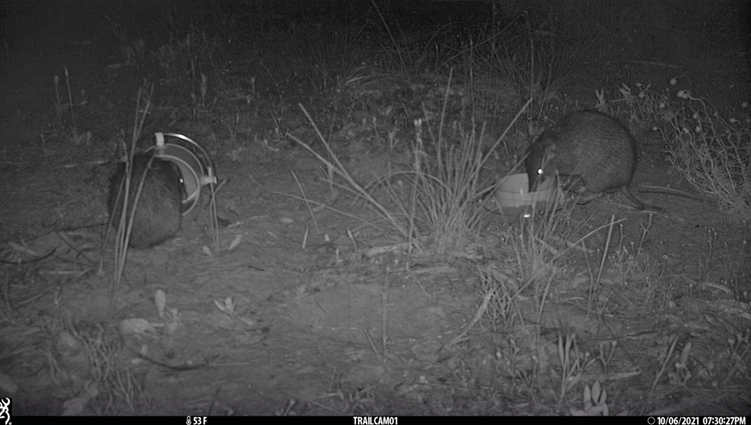Thanks for showing interest in my current experiment at Craigie Bushland!
I am interested in how the quenda respond to predators – more specifically, to determine whether the quenda inside the fence are as capable of identifying and responding to predators as those who exist outside the fence. The population inside the fence have been isolated from predators (foxes and cats) since the construction of the haven in 2014. Over time, they may have lost their anti-predator responses, and this is important information to know if these individuals are going to be translocated elsewhere (to supplement existing populations or to establish new ones) as they will have little chance at survival in areas with predators if their anti-predator responses have been weakened.
To measure these important behaviours, I have set up PVC pipe feeding stations around the reserve. Some are paired with fox predator cues (fur) and some have a control treatment (cotton wool) to allow me to observe how quenda forage when there is evidence of a predator around. The majority of quenda in the reserve are microchipped (just like a pet cat or dog would be), and each station has a microchip reader around the entrance (pictured below) which lets me monitor the behaviour of specific individuals.

Quenda are important for maintaining a healthy ecosystem (as they aerate the soil, disperse seeds and recycle nutrients) and we are fortunate to have them in urban reserves such as this one. Ultimately, my project is aiming to promote their survival here and in future populations, so we can continue to have them around.
Thank you for not disturbing any equipment
If you have any questions or are interested in the study, please feel free to reach out! You can send me an email using the envelope icon below.
Thanks to the City of Joondalup for the top photograph.